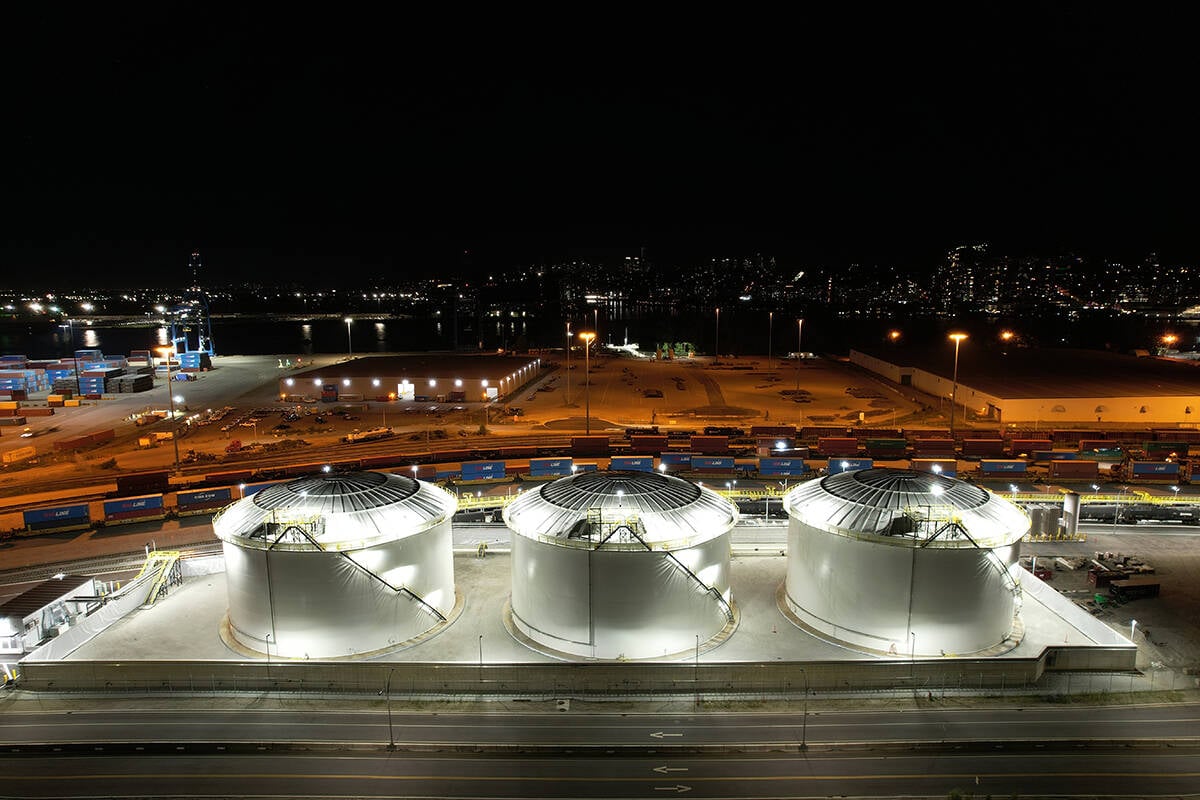It’s a discrepancy that must scream out at cattle producers every time they walk past their grocery store’s meat counter.
The prices they receive for their feeder calves are half what they were before BSE was discovered in North America, yet the retail price for beef has dropped only slightly.
Where did the money go?
With figures provided by Canfax, the Canadian Cattleman’s Association, United States Department of Agriculture, the George Morris Centre, Statistics Canada and interviews with packers and retail associations, it was possible to follow the money trail a southern Alberta steer takes from pasture to plate, before and after BSE.
Read Also

Canola oil transloading facility opens
DP World just opened its new canola oil transload facility at the Port of Vancouver. It can ship one million tonnes of the commodity per year.
Last February feedlots were paying producers more than $800 for a 650 pound feeder steer. Today, that figure is $422.50. Last year, packers paid feedlots $1,380 for a fed steer; today only $960.
The exact price Canadian retailers were paying packers one year ago isn’t fully known, but analysts, packers and retailers say the price is close to the same as it was before BSE was announced in May – $1,232 for a 756 lb. carcass from a 1,200 fed steer. Competitive prices in the United States, where the figure is published, suggest they are correct.
One year ago the same animal, once slaughtered, brought about $2,085 in the grocery store where today it commands an average of eight percent less or about $1,931.
In the past year, on the same animal, producers’ prices dropped $380 per head, feeders’ prices dropped $420 per head, packers’ prices remained fairly constant and retail meat sellers’ prices have fallen by $154.
Gross margins, the difference between what the animal was purchased for and what it ultimately sold for at the next link in the food chain, increased $30 per head for feedlots over the last year, to about $550 on average.
Feedlots also must factor in a recovery cost for margin losses that ranged from $200 to $700 per head in 2003.
Gross margins for packers in February 2004 were about $272 per 1,200 lb. steer.
The gross margin for retailers was fairly constant, about $700.
This year the packer received about the same price for boxed beef as last year and paid $420 less for live slaughter steers.
In turn the packer was paid about $250 less for the offal and slaughter waste. As well, a 13.3 percent rise in the Canadian dollar against the American dollar cost another $153.
For each 1,200 lb. steer, 444 lb. of waste is removed at slaughter and 244 lb. of fat and bone in retail cutting. Before last May, this waste, hide and offal commanded a price from renderers and foreign export markets of between $200 and $310 and some of this money was returned to packers and retailers.
Since BSE was discovered, packers’ costs have risen. Separate production lines are required for cattle older than 30 months, along with dental inspection for age, removal of specified risk materials and disposal of waste that once brought income.
















